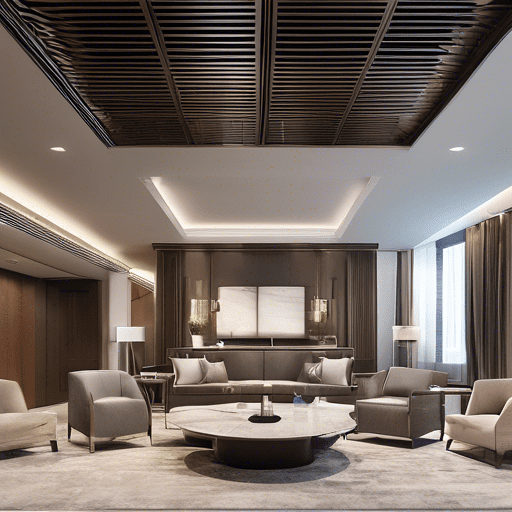Sustainability in construction is no longer a trend; it's a necessity. As the world grapples with environmental challenges, the construction

In the world of HVAC design and MEP engineering, innovation often takes the form of more efficient systems, sustainable practices, and advanced technologies. One such innovation that has made a significant impact, especially in the hospitality and multifamily residential sectors, is the Packaged Terminal Air Conditioner (PTAC) unit. In this blog post, we will explore how PTAC units are transforming HVAC design and MEP engineering for hotels and apartments, offering a cost-effective and energy-efficient solution.
Efficiency in a Compact Package
PTAC units are self-contained heating and cooling systems designed to condition individual rooms. These compact units are commonly found in hotels, apartments, assisted living facilities, and other multifamily residences. Their versatility and efficiency make them a compelling choice for HVAC design in these settings.
1. Cost-Effective Zoning:
Traditional HVAC systems require extensive ductwork and piping to distribute air or water to various parts of a building. In contrast, PTAC units are installed directly in the rooms they serve. This zoning approach allows for personalized temperature control, reducing energy waste by conditioning only occupied spaces.
2. Reduced Installation Complexity:
From an MEP engineering perspective, PTAC units simplify installation. They eliminate the need for extensive ductwork, central chillers, and complex piping systems, making them a cost-effective choice for projects with budget constraints. Furthermore, installation is often faster and more straightforward, leading to shorter construction timelines.
3. Energy Efficiency:
PTAC units are renowned for their energy efficiency. Many models are equipped with inverter technology, which adjusts the compressor speed to match the cooling or heating load accurately. This results in reduced energy consumption and lower utility costs for the building’s operators and occupants.
4. Versatile Applications:
PTAC units are adaptable and can serve various purposes. Besides heating and cooling, many models offer additional features like air purification and dehumidification. This versatility can enhance the overall indoor air quality and comfort of the space.
5. Low Maintenance:
Maintaining PTAC units is relatively simple, making them an attractive option for building owners and operators. Routine tasks include filter replacement and cleaning, which can be easily performed without major disruptions.
1. Improved Guest Comfort:
In the hotel industry, guest comfort is paramount. PTAC unit offer guests the flexibility to customize their room’s temperature to their liking, providing a superior experience.
2. Reduced Operating Costs:
For hotel owners and operators, PTAC units can lead to significant cost savings. Their energy-efficient operation, ease of maintenance, and zoning capabilities can translate into lower operational expenses.
3. Streamlined Design:
From an HVAC design perspective, PTAC units streamline the process. Without the need for extensive ductwork, designers have more freedom in room layout and aesthetics, leading to more attractive and functional spaces.
1. Individual Comfort Control:
In apartment complexes and multifamily residences, PTAC unit offer tenants individual control over their living environment. This control not only improves comfort but also enhances tenant satisfaction and retention.
2. Reduced Construction Costs:
Simplified installation and the elimination of ductwork reduce construction expenses, which can be a significant advantage for developers and builders. Cost savings can be reallocated to other desirable amenities or design elements.
3. Energy-Efficient Living:
PTAC units promote energy-efficient living in apartments. Their precise temperature control, energy-saving features, and ease of use empower tenants to be environmentally conscious without compromising comfort.
At InnoDez Engineering, we understand the impact of PTAC unit on HVAC design and MEP engineering. Our experienced teams work closely with clients to design systems that harness the benefits of PTAC units while ensuring optimal performance, energy efficiency, and cost-effectiveness.
As the demand for cost-effective, energy-efficient, and user-friendly HVAC solutions continues to grow, PTAC units have emerged as a transformative technology. Their application in hotels and multifamily residences has reshaped HVAC design and MEP engineering by offering customizable comfort, streamlined installation, and sustainable benefits. PTAC unit are no longer an alternative but an essential consideration in modern building projects.
About Author
InnoDez